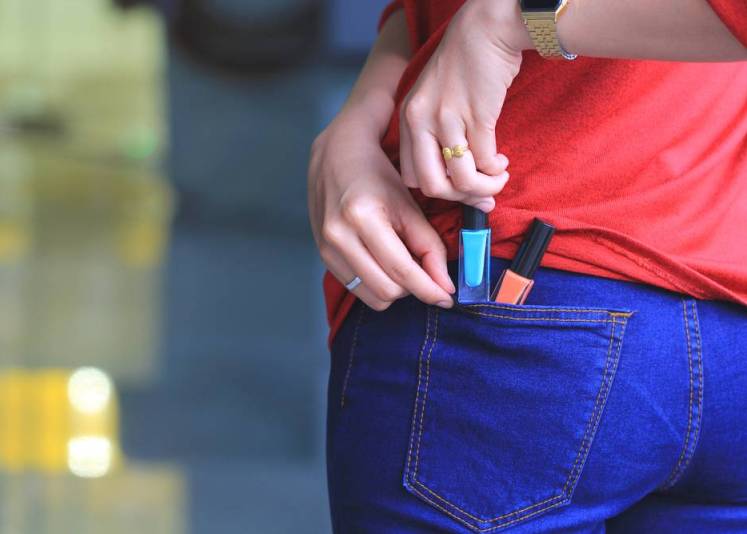
Despite its relatively long history, kleptomania remains poorly understood to the general public, clinicians, and sufferers. Kleptomania, a disabling impulse control disorder, is characterized by the repetitive and uncontrollable theft of items that are of little use to the afflicted person. be used in combination to treat and control such behaviors. However, it is important that interventions such as cognitive behavioral therapy, which increase subjective adaptation. Therefore, kleptomania is treated by systematic desensitization. In particular, the problem behaviors of kleptomania arise because of arousal and tension and are reinforced by the relaxed feeling that follows. These behaviors are reinforced by positive consequences. Kleptomania and compulsive buying can be explained by the conditioning theory. In this article, we review the available clinical treatments for kleptomania and compulsive buying in Japan. However there is no established treatment for these problems in Japan yet. Kleptomania and compulsive buying are important clinical problems. Because kleptomania patients seeking treatment with medication may differ from others with kleptomania, further studies are needed. There were no statistically significant differences by sex. The patients with kleptomania had scores that differed significantly from those reported by normal controls. 26 adult outpatients who met DSM-IV criteria for kleptoania were administered the Dissociative Experiences Scale and compared to 22 normal controls. The purpose of this investigation was to clarify a possible link between dissociation and kleptomania, a disabling disorder whose phenomenology remains understudied. Many patients with kleptomania report an altered state of consciousness during acts of theft. The results suggest the need to assess a wide array of addictive behaviors in individuals with kleptomania. Kleptomania severity was significantly associated with compulsive work and shopping measured by the SPQ. 20.75% of the sample met criteria for an addictive disorder four for a substance use disorder and four for a behavioral addiction. Fifty-three individuals with a diagnosis of kleptomania completed measures of kleptomania severity, semi-structured clinical interviews to assess co-morbid diagnosis of addictive disorders, and the Shorter PROMIS Questionnaire (SPQ) assessing an array of addictive behaviors. We examined the association between kleptomania and addictive disorders, including behavioral addictions. Kim, Hyoun S Christianini, Aparecida Rangon Bertoni, Daniela de Oliveira, Maria do Carmo Medeiros Hodgins, David C Tavares, Hermano Kleptomania and Co-morbid addictive disorders. Treatment modalities used in this case, including the use of the Yale-Brown Obsessive Compulsive Scale as a surrogate marker to gauge response to treatment, will be discussed. A case of kleptomania, which was potentially exacerbated by multiple factors, will be reviewed. These associations with kleptomania can be extrapolated to pharmacological strategies that can potentially help in treating kleptomania.


Recently, attempts to explain kleptomania within a neuropsychiatric paradigm have highlighted the possible links between mood disorders, addictive behaviors, and brain injury with kleptomania. Historically, kleptomania has been viewed from a psychodynamic perspective, and the mainstay of treatment has been psychotherapy. Often, the condition is kept secret by the patient, and usually help is sought only when confronted by the legal consequences of the impulsive behaviors. Kleptomania is an impulse control disorder that can cause significant impairment and serious consequences. Kleptomania and Potential Exacerbating Factors The findings emphasize the need for rigorous treatment approaches to target kleptomania symptoms and prevent re-offending. Kleptomania is associated with significant legal repercussions. Sixty-nine subjects with kleptomania (68.3%) had been arrested, 36.6% had been arrested but not convicted, 20.8% had been convicted and incarcerated after conviction, while only 10.9% had been convicted and not incarcerated after conviction. Co-occurring depressive, substance use, and impulse control disorders were common.
Kleptomania dsm 5 full#
Mean age of shoplifting onset was 19.4 +/- 12.0 years, and subjects shoplifted a mean of 8.2 +/- 11.0 years prior to meeting full criteria for kleptomania. Of 101 subjects with kleptomania, 73.3% were female. From 2001 to 2007, 101 adult subjects (n = 27 males) with DSM-IV kleptomania were assessed on sociodemographics and clinical characteristics including symptom severity, comorbidity, and legal repercussions.

Grant, Jon E Odlaug, Brian L Davis, Andrew A Kim, Suck WonĪlthough studies have examined clinical characteristics of kleptomania, no previous studies have examined the legal consequences of kleptomania.


 0 kommentar(er)
0 kommentar(er)
